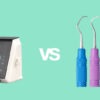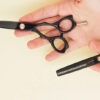Introduction
Veterinary orthopedic instruments play a critical role in procedures ranging from fracture repairs to joint reconstructions. These specialized tools ensure surgical precision, reduce complications, and promote faster recovery in animals. At Surgment, our FDA, CE, and ISO-compliant orthopedic instruments are crafted from premium stainless steel, offering reliability in both small and large animal practices. This comprehensive guide explores essential veterinary orthopedic instruments, their applications, selection tips, maintenance practices, and the latest trends empowering surgeons in 2025.
Why Orthopedic Instruments Matter
Orthopedic procedures demand instruments that balance strength and finesse. A 2024 Veterinary Surgery study found that high-quality instruments reduce complication rates by 22% in fracture repairs, significantly improving animal mobility. Substandard tools, such as weak bone plates or dull drills, may cause implant failure, tissue trauma, or extended surgeries—jeopardizing patient health. For example, precisely engineered bone screws ensure stable fixation, while poorly made screws may loosen or fail. Surgment’s instruments are designed for accuracy and long-term performance.
Essential Veterinary Orthopedic Instruments
- Bone Plates and Screws: Locking or compression plates for fracture stabilization.
- Drills and Saws: Electric or manual tools for cutting or shaping bone.
- Pin and Wire Systems: Kirschner wires and cerclage wires for temporary fixation.
- Retractors: Gelpi or Hohmann retractors for tissue exposure.
- Chisels and Osteotomes: For controlled bone cutting or reshaping.
- Forceps and Clamps: Bone-holding forceps for fragment positioning.
Applications in Veterinary Orthopedics
- Fracture Repair: Stabilizing long bones or pelvic fractures with plates, screws, and pins.
- Joint Surgery: Cruciate ligament repairs or total hip replacements using retractors and drills.
- Spinal Surgery: Vertebral corrections with osteotomes and forceps in small animals.
- Amputations: Clean bone cuts for prosthetic fittings using surgical saws and chisels.
How to Choose Orthopedic Instruments
- Material Quality: Choose stainless steel or titanium for strength and corrosion resistance. Surgment uses surgical-grade stainless steel.
- Precision Design: Look for fine-tipped, calibrated instruments for accurate bone work.
- Ergonomics: Lightweight, non-slip grips reduce fatigue in lengthy procedures.
- Certifications: Ensure tools meet FDA, CE, and ISO standards for veterinary safety.
- Warranty: A lifetime guarantee, like Surgment’s, offers confidence and value.
- Animal Size Fit: Select tools like micro plates for small pets or heavy-duty drills for larger animals.
Case Study: Improving Outcomes with Surgment’s Tools
n 2024, a veterinary hospital in Oregon upgraded its orthopedic department with Surgment’s FDA-compliant bone plates and surgical drills. Previously, generic plates had a 10% failure rate in large-animal surgeries, often requiring repeat operations. After transitioning to Surgment instruments, failure rates dropped to just 2%, while recovery times improved by 15%. This case reinforces the impact of using high-quality veterinary orthopedic instruments.
Maintenance Tips for Veterinary Orthopedic Instruments
- Cleaning: Rinse immediately post-surgery and use enzymatic cleaners in ultrasonic baths for 5–10 minutes.
- Sterilization: Autoclave at 134°C for 3–5 minutes using sterilization pouches.
- Sharpening: Maintain cutting tools every 6–12 months to ensure effectiveness.
- Lubrication: Use surgical-grade lubricant on joints and locks.
- Storage: Store in padded sterile trays with moisture-control packets.
- Inspection: Always check for wear, corrosion, or damage before surgery.
Trends in Veterinary Orthopedic Instruments for 2025
- Minimally Invasive Designs: Micro plates and precision drills for smaller incisions.
- Biocompatible Implants: Titanium and bioabsorbable options enhance healing.
- Smart Tools: Drills with torque sensors for controlled depth and speed.
- Sustainable Packaging: Eco-friendly stainless steel and recyclable materials.
- For more on veterinary surgery practices, visit the American College of Veterinary Surgeons.
Frequently Asked Questions (FAQs)
- How do I choose the right bone plate size?
- Match plate size to animal size and fracture type; consult Surgment for guidance.
- Are titanium instruments worth the cost?
- Yes, for lightweight, corrosion-resistant tools, especially in complex cases.
- What’s the benefit of FDA-compliant orthopedic tools?
- They ensure safety, precision, and regulatory adherence, protecting animals and your practice.
- How often should I replace bone drills?
- With proper maintenance, quality drills last years. Replace if dull or damaged.
Veterinary orthopedic instruments are critical for performing safe, accurate fracture repairs, joint surgeries, and amputations. Choosing certified, precision-made tools—and maintaining them correctly—leads to better outcomes and patient satisfaction. Surgment’s FDA-compliant instruments are trusted by professionals for their reliability, accuracy, and durability. Explore our catalog and elevate your veterinary practice in 2025.



Add comment